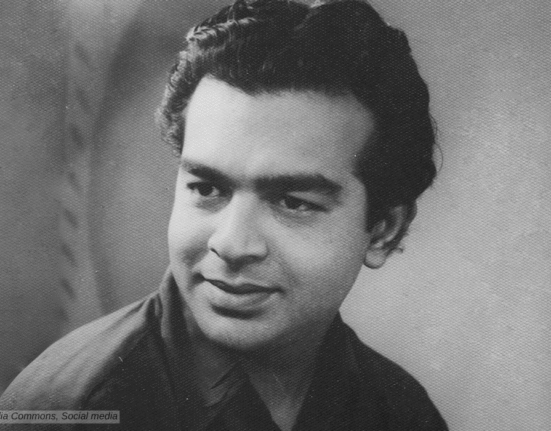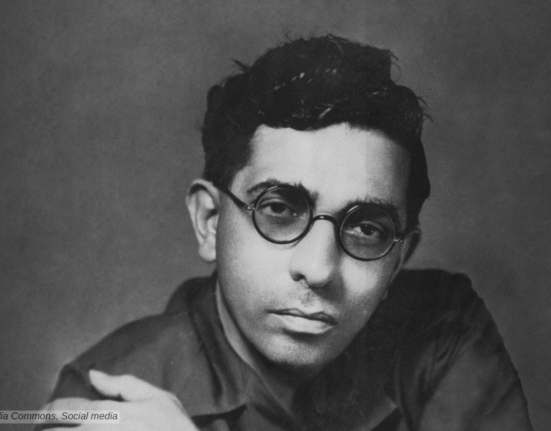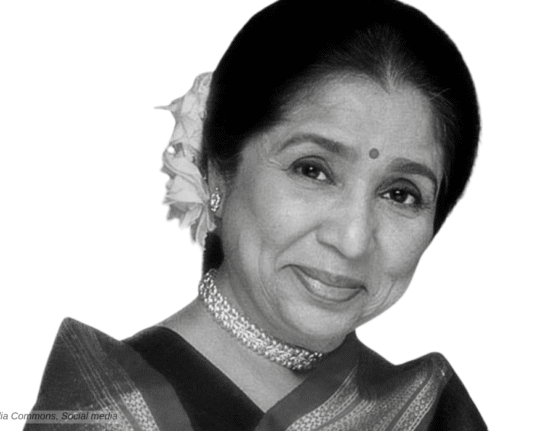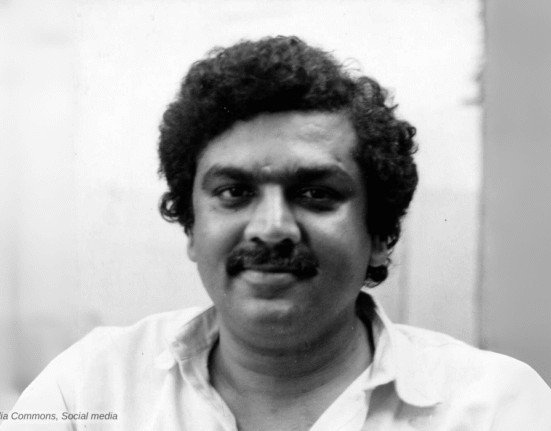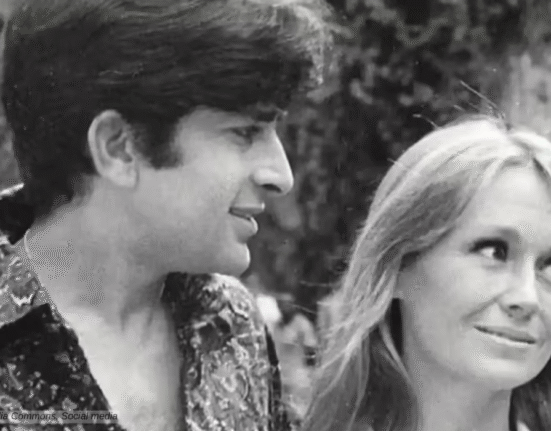I can’t imagine a person who will not fall in love with the lady as madly as I was. She has an enduring charm, childlike innocence, a voice straight from heaven, and a laugh that can warm the hearts. She is a superstar, an actor, a children’s story writer, a puppeteer, and a voice artist, as well as a most beautiful and humble human being. Please meet the national treasure, a living legend and a timeless icon of Indian cinema, Kamini Kaushal.
“We were both shattered. We were very happy with each other. Everyone falls in love… But I had taken on the girls. I wouldn’t be able to show my face to my sister. My husband, a fine human being, understood why it happened.”
Kamini Kaushal on Relationship with Dilip Kumar
Early Life of Kamini Kaushal
Kamini Kaushal, born Uma Kashyap on Jan 16, 1927, (few sources document his birthday on 24 Feb) in Lahore. Born into a distinguished family of Lahore. Her father was renowned botanist Prof. Shiv Ram Kashyap. Prof. Kashyap is widely known as the father of Indian Botany. Apart from being the founder of Lahore’s famous Botanical Garden, he was the president of The Science Congress. Kamini Kaushal completed her schooling from Lady Maclagan Girls High School. She then went to Kinnaird College for Women, Lahore, for her graduation.
Kamini was the youngest of five siblings, with two brothers and three sisters. Her elder brother, Doctor K.N. Kashyap, was a surgeon who worked at the P.G.I., while her younger brother, Colonel A.N. Kashyap, was a World War veteran.
During her teenage years, she was active in various sports and extracurricular activities, including swimming, cycling, horse riding, and skating. As a child artist, she also worked on by the name of “Uma,” which marked the beginning of her journey in the performing arts.
Neecha Nagar

Kamini Kaushal’s entry into the film industry was serendipitous. She was discovered by director Chetan Anand, who was the close friend of her elder brother. Chetan, who was looking for the suitable cast members for his debut film “Neecha Nagar,” offered her the main lead, which she refused. Chetan and his wife, Uma Anand, again offered her the role when she visited her sister in Bombay and also asked her brother. After much persuasion and encouragement from her brother, she accepted the role.
For the film, Chetan wanted to change her name; in an interview she said that “Chetan’s wife, Uma Anand, was also part of the film. My name also being Uma, he wanted a different name for me. I asked him to give me a name beginning with ‘K’ to match with the names of my daughters Kumkum and Kavita (her sister Usha’s daughters).”
The film also starred Rafiq Anwar, Uma Anand, Rafi Peer, Hamid Butt, and Zohra Sehgal, released in 1946. Neecha Nagar was written by Khwaja Ahmad Abbas on a story written by Hayatullah Ansari, which he adapted from Maxim Gorky’s 1902 play “The Lower Depths.” The film won the Palme d’Or (Golden Palm) at the Cannes Film Festival, marking a significant milestone in her career.
Early Stardom
After Neecha Nagar, she did Gajanan Jagirdar’s Jail Yatra (1947) with Raj Kapoor and Munshi Dil’s Do Bhai (1947) with Ulhas. Kamini Kaushal quickly rose to prominence, becoming a trailblazer for women in the industry. She was one of the few women who achieved the superstar status despite being married.
Kamini Kaushal was the first lead heroine for whom Lata Mangeshkar ever sang. The film was Shahid Latif’s Ziddi (1948), written by Ismat Chughtai. The film starring Kamini Kaushal and Dev Anand proved to be the first blockbuster of their careers.
Kaushal’s other early roles in films like Aag (1948) with Raj Kapoor, Paras (1949) with Madhubala and Rehman, Namoona (1949) with Kishore Sahu, Shair (1949) with Suraiya and Dev Anand, and Poonam (1952) with Ashok Kumar showcased her acting prowess, earning her critical acclaim.

Kamini Kaushal and Dilip Kumar
Kamini Kaushal and Dilip Kumar shared the screen in films like Shaheed (1947), Nadiya Ke Paar, Shabnam (both in 1948), and Arzoo (1950). Their on-screen chemistry was a blend of contrasts, with Dilip’s nuanced approach complementing Kamini’s natural tenor. The sparks of romance ignited between them during the filming of Shaheed.
However, Kamini was already married. After her older sister Usha died in a car accident, leaving behind two daughters She married brother-in-law BS Sood. Sood was chief engineer at the Bombay Port Trust. Despite their deep connection, Kamini had responsibilities as a wife and a mother.
In a Filmfare interview, Kamini revealed, “We were both shattered. We were very happy with each other. Everyone falls in love… But I had taken on the girls. I wouldn’t be able to show my face to my sister. My husband, a fine human being, understood why it happened.”
Dilip Kumar, too, expressed the impact of their parting, acknowledging Kamini as his first love. The songs like “Aye dil mujhe aisi jagah” (Arzoo), “Badnaam na ho jaaye mohabbat” (Shaheed), and “Tumhare liye hue badnam” (Shabnam) featuring them continue to be popular, capturing the timeless essence of their on-screen collaboration.
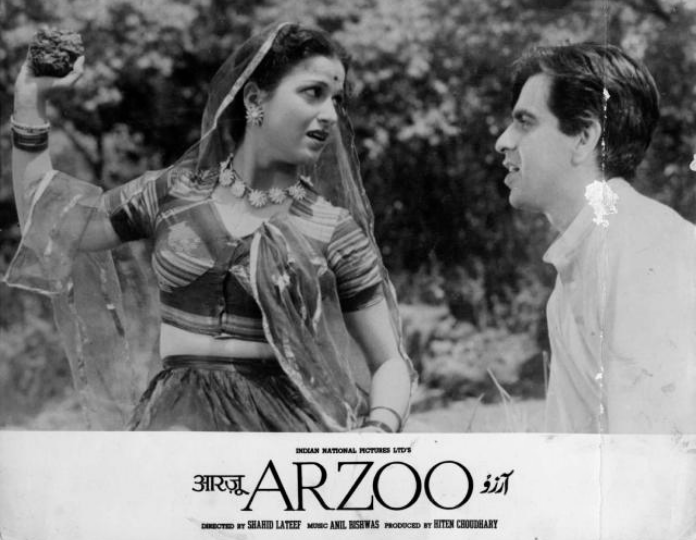
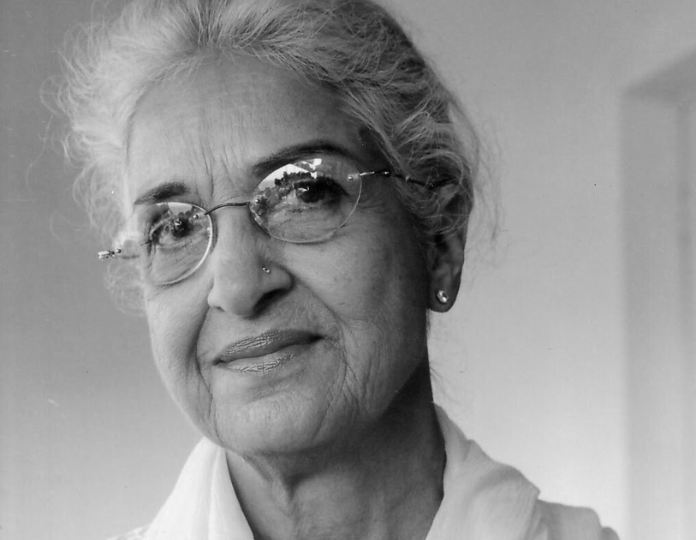
Critical Acclaim
One of her most acclaimed performances came in Bimal Roy‘s Biraj Bahu (1954), which was based on a Bengali novel by Saratchandra Chattopadhyay. Kamini’s portrayal of Biraj Chakravorty, a young woman facing the harsh realities and tragedies of life, earned her the Filmfare Award for Best Actress in 1956.
Kamini Kaushal also ventures into production with Chalis Baba Ek Chor (1954), a light-hearted film starring herself with Balraj Sahni, David, Smriti Biswas, Om Prakash, and Jagdeep. Some of her other notable films include Aas (1953), Ansoo (1953), Sangam (1954), Aabru (1956), Bade Sarkar (1957), and Jailor (1958). In the late 1950s she goes into semi-retirement to further focus on her family.
She came out of retirement for Trilok Jetley’s Godaan (1963), an adaptation of Mushi Premchand’s famous novel Godaan. Jetely waited for months for Kamini Kaushal’s dates as she was pregnant with her second child at the time. The film, which starred Raaj Kumar (Hori), Kamini Kaushal (Dhaniya), and Mehmood (Gobar), and had the music of Pandit Ravi Shankar, who composed the score for her first (Neecha Nagar in 1946) and last (Godaan) films as a heroine.
Kamini Kaushal did not do many films as she was busy in her family life. Although she was always gets high praise for her versatility. She seamlessly transitioning between intense dramatic roles and light-hearted characters, displaying a remarkable range.
Transition to Character Roles
In 1965, Manoj Kumar approached her for the role of Bhagat Singh in “Shaheed” and said that he would not start the film without her. Her role in the film earned her a BFJA Award for Best Supporting Actress. In 1969 she paired opposite Balraj Sahni in Raj Khosla’s “Do Raste,” as the idealistic bhabhi of the family. She stunned audiences by playing a mercenary vamp with aplomb in Ravi Tandon’s suspense drama “Anhonee (1973).”
After Shaheed, she went on to do many memorable character roles in films like Upkaar (1967), Vishwas (1969), Waris (1969), Do Raaste (1969), Yakeen (1969), Aadmi Aur Insaan (1969), Heer Raanjha (1970), Purab Aur Paschim (1970), Uphaar (1971), Shor (1972), Tangewala (1972), Qaid (1975), Bhanwar (1976), Roti Kapda Aur Makaan (1974), Heeralaal Pannalaal (1978), Dus Numbari (1976), Santosh (1989), and Gumraah (1993). Her last few films are Har Dil Jo Pyar Karega (2000), Chori Chori (2003), and Laaga Chunari Mein Daag (2007).
In her later years, Kamini Ji continued to act in selective films like Chennai Express (2013), where she played Shahrukh’s grandmother. Her role as Kabir’s grandmother in Kabir Singh (2019) earned her a Screen Award for Best Supporting Actress and a nomination for the Filmfare Award for Best Supporting Actress. Her last role came in Amir Khan’s Lal Singh Chaddha (2022).
Multifaced Personality
She also worked on TV, most notably the British series “The Jewel in the Crown (1984),” “Shanno Ki Shaadi,” and “Waqt Ki Raftar.”
Beyond her contributions to Hindi cinema, Kamini Kaushal ventured into children’s entertainment and made shows for children like “Khel Khilone,” “Chaat Pani,” “Chand Sitare,” “Chandamama,” and “Hari Bhari Phulwari,” adding another dimension to her illustrious career. She also writes children’s stories; her stories were a regular feature in the children’s magazine Paraag, featuring the characters like ‘Bunty,’ ‘Chotbhai,’ and ‘Motabhai.’
She started making puppets for her children and continued it and took it to a professional level by becoming an accomplished puppeteer. Her puppet shows, which aired on Doordarshan, are now clut classics.
Personal Life and Legacy
In her personal life, Kamini Kaushal went on to have three sons with her husband, Braham S. Sood: Rahul Sood, Vidur Sood, and Shravan Sood. Kamini also took on the responsibility of raising her elder sister Usha’s two daughters, Kumkum Somani and Kavita Sahni, as her own.
Her dedication to the craft earned her accolades, including the Filmfare Lifetime Achievement Award in 2015. She also got the Lifetime Achievement Award by Kalakar Awards in 2011. In 2015 she was chosen for BBC’s 100 Women Award.
Kamini Kaushal’s enduring impact on Indian cinema, marked by her graceful presence and compelling performances, continues to resonate with audiences. Her remarkable career, spanning decades, has left an indelible mark on the cultural landscape, making her an enduring symbol of cinematic excellence.
On her 98th birthday we wish her a very long and healthy life. We are blessed to live in the era where such legends are active and working.
Kamini Kaushal on IMDB




